Iranian "umbrella" defense requires urgent updates
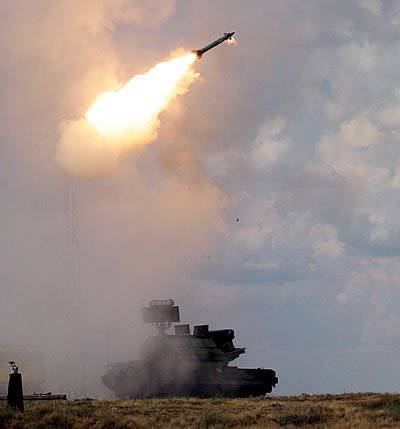
After the fall of the Libyan regime and the physical destruction of its leader, all the attention of world media, experts and political scientists switched to a new object of Western interests - Iran.
American democracy, having dealt with yet another disagreeable government, continues to realize its growing oil appetites in South-West Asia, aiming at Iran. Painfully tidbit - this Iran! The country produces about 180 million tons of oil per year, more than half of which is exported. About 85% (!) Of foreign exchange earnings in the country's budget is provided through the sale of oil. In terms of proven oil reserves, Iran ranks fourth in the world. The country in terms of daily oil production (about four million barrels per day) is the second after Saudi Arabia among OPEC members.
The United States is actively pushing Israel, concerned about Tehran’s nuclear program, towards war with Iran. According to analysts, Tel Aviv can strike the first blow independently, secretly from Washington.
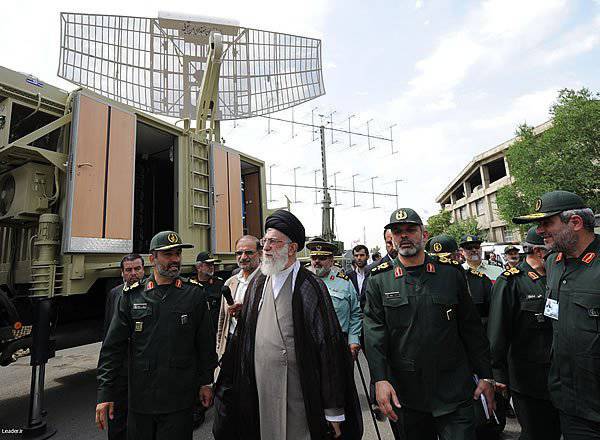
However, the question of exactly when, with what forces a strike on Iran will be dealt, who will be part of the Western coalition, remains open. It is more or less clear only what the strategy of the attackers will be - it has already been well developed during previous conflicts. Obviously, the coalition group will achieve the objectives of the operation with air strikes during an air campaign lasting from several weeks to 2-3's months. Important targets will be hit several times with high precision. weapons. The primary targets for strikes will be plants for the production and processing of nuclear fuel, uranium mines, and facilities for its enrichment. Will get and refineries, other industrial centers.
But initially the problem of suppression (complete destruction) of the air defense system will be solved. The massive use of cruise missiles for various purposes, controlled aviation bombs will disable the command and control system of Iran, practically suppressed the system of reconnaissance and anti-aircraft missile fire. In this case, the task of the attacker will be the destruction in the first two or three days of up to 70-80% of the radar, and in the future - up to 90%. A firearm would also have to suffer a similar fate, but the air defense system will try to avoid such losses. The case will be completed by manned aircraft, which will begin bombing only after the complete suppression of the air defense system. The West protects its professional pilots, and it does not matter that the civilian population of Iran will suffer.
How will Iran respond to aggression? Will it be easy prey? Will the Iranian air defense be able to give a fitting rebuff to the aggressor? Let's try to figure it out.
In general, the Iranian armed forces represent a fairly serious force. They are equipped with modern weapons, staffed with a high level of training. Preparing for war, the country produces itself and purchases modern effective weapons abroad. Tanks, BMP, MLRS, tactical and ballistic missiles, artillery systems, aviation - there is everything for effective combat operations. Iran has rich experience in warfare. In the 80s of the last century (according to historical by standards, most recently - 25-30 years ago) Iran waged a fierce war with its closest neighbor - Iraq. In the war, all available types of weapons were used, including air defense forces and equipment. As part of the air defense groups were locators and fire systems manufactured in different countries, including Soviet ones. Iranian anti-aircraft gunners, along with others, were also trained by Soviet specialists. The defenders of the Iranian sky knew how to fight and did not forget how to do it.
By the way, Soviet specialists simultaneously assisted both parties at war then. The author of these lines happened to be present at the meeting of two schoolmates of the Poltava anti-aircraft school who recalled the lieutenant years and suddenly found out that at the same time they were fighting on different sides of the barricades against each other!
RICH MILITARY EXPERIENCE
Today, there are more than 3000 fire units of anti-aircraft missile systems and systems, as well as anti-aircraft artillery in the combat strength of Iran’s anti-aircraft defense systems. Moreover, there are combat tools as outdated, but past modernization, and the most modern systems. The variety of types of reconnaissance assets, anti-aircraft weapons, operating on different physical principles, having a wide range of performance characteristics, allows us to build a fairly strong, reliable air defense system if properly used. It was not by chance that several years ago, in one of the interviews, a major Russian military leader, who himself headed a powerful air defense force, gave a very high assessment of the state of the Iranian air defense system, concluding that it was able to withstand an air strike from the United States.
The quantitative and qualitative composition of the forces and means of air defense of Iran determines the principle of building an air defense system. Obviously, the zone-object principle that is most feasible and adequate to the conditions. Today, no country in the world can afford to build an air defense system capable of reliably, without failures in the affected areas, with a high density of impact on the air enemy to protect certain important objects, not to mention protecting the entire territory of the country. The most illustrative example in this sense was the GSVG air defense system in the early 90s of the last century. At that time, it was the most powerful, reliable system that had all the constituent elements: control, reconnaissance of the air enemy and notifications about it, fighter-air cover (IAP) and anti-aircraft missile (artillery) cover (SGAP).
The air defense system of the Islamic Republic has the 4 air defense region, which is very simplified in the diagram. In each area, consisting of air defense groups, there are all the necessary elements, including control systems, intelligence, IAP and SGAP. Strategically important objects in the west of the country, as well as on the coast of the Persian, Hormuz and Oman gulfs, are better protected from air strikes. In these zones, 5-7 air defense groups are being deployed to protect large cities, industrial areas, oil refineries, and nuclear fuel processing centers.
Virtually no anti-aircraft missile (artillery) cover the eastern territory of the country, bordering with Afghanistan and Pakistan, from which will also come the threat of an air attack.
CONTROL SYSTEM
The command and control system of the air defense forces is an integral part of the command and control system of the national armed forces. The SS was built according to the usual classical scheme, which unites the directorates and headquarters of districts, air defense groups, command posts (control posts) of anti-aircraft (artillery), radio engineering units and subdivisions that make up the air defense groups. The communication system is represented by channels of tropospheric, relay, shortwave radio communication. Widely used wired connection.
The data in the open press testifies to the presence in the control system of a number of problems requiring urgent solutions.
First, on the equipment of the CP (PU) there are obsolete automated control systems for the 60-80s of the last century, which are still Soviet, as well as Chinese and American. The equipment has been worn out for a long time, it has served several service lives. The element base has been serving for more than half a century, which, in the context of a shortage of spare parts, and often complete lack of it for a number of component parts, causes a lot of problems with maintaining machinery in good condition. The coefficient of technical readiness of ACS equipment with such terms and conditions of operation will not exceed the level of 0,3-0,4 in any army, even a very patriotic one.
Secondly, the ideology of the principles of solving management tasks implemented in the ACS, built on the ideas and technical capabilities of the last century, does not meet today's increased requirements. The volume of circulating information at all levels of the hierarchy in the control system has increased dramatically, the requirements for efficiency and quality of the tasks to be solved significantly when planning combat operations and especially when repelling air enemy attacks, as well as the level of automation of control processes.
In the conditions of short-term attacks of air attack weapons (EAS), the need for operational decision-making to conduct reconnaissance and fire with an extremely acute shortage of available time at PU (KP), the practical absence of modern integrated automatic control systems (CSAU) causes problems of effective use of sufficiently high potential fire capabilities of subordinate SAMs (ZRS). Virtually no elements of support systems for decisions taken at the PU (KP) in the course of the reflection of air strikes in the existing command and control system of Iran’s air defense forces. Meanwhile, in today's conditions of organizing and conducting short-term air combat, a high degree of automation of the processes of collecting, processing, transmitting and exchanging radar information (RI), making decisions to repel impacts and to conduct anti-aircraft missile fire is urgently needed.
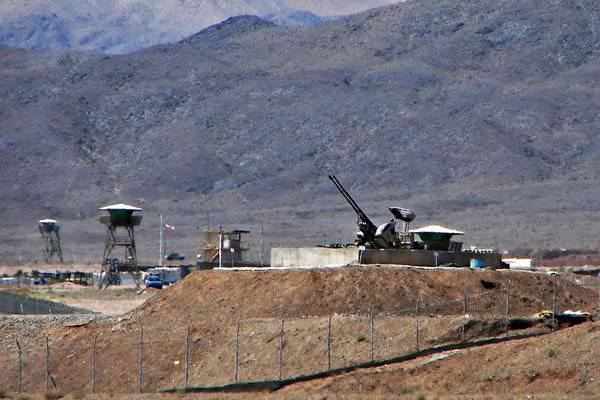
Thirdly, the mountainous terrain has a significant negative impact on the capabilities of the SS. The deployment of a system of command posts should be carried out at commanding heights with minimal possibilities for selecting positional areas for PU (KP). The shielding effect of mountainous areas significantly reduces the range and reliability of radio, radio relay and tropospheric communication. The change of positional areas during the endangered period, and especially in wartime, will be difficult due to the difficulty of movement in the mountains, difficulties in choosing routes, problems with their engineering equipment, limited maneuver. Obviously, the operational equipment of the areas of the forthcoming hostilities must be carried out even in peacetime, carrying out engineering work, deploying backup communication channels, preparing nomination routes, practicing plans to bring troops into combat readiness, etc.
Finally, it must be clearly understood that the control and reconnaissance systems of the air enemy will be the primary targets of destruction with the onset of hostilities. All positional areas of PU (KP), communications centers, radar positions, peacetime frequencies have long been known to the enemy and are under the gun of his WTO. Under the conditions of intensive fire and electronic countermeasures, centralized management of areas and air defense groups will most likely be lost. Therefore, it is already necessary to work out variants of independent actions of anti-aircraft formations in the event of loss of control at all levels. For this purpose, detailed guidelines for firing and engagement should be worked out for them, providing for various options for reflecting EAS impacts, depending on the air situation.
EXPLORATION AND NOTIFICATION
The enemy air reconnaissance and warning system is represented by several components. An air attack early warning network has been created by means of reconnaissance on air carriers. A network of ground-based radars deployed to radar stations (RLP) has been deployed to receive and issue information on airborne radioactive signals for the system of an SRAP. Posts are deployed along the state border of the country in threatened directions. As part of the RLP there are radars of the old park of foreign production, mainly the USA and Great Britain. Consequently, it is certainly not necessary to count on the secrecy of the frequency range of peacetime and wartime, radar deployment sites. The existing RLP network created a radar field of reconnaissance of air targets at medium and high altitudes, which has a focal character. It is not necessary to speak about a continuous reconnaissance zone, about the multiplicity of overlapping of the detection zones due to the small number of radar stations. All existing radars are based on the principles of active location and are easy prey for modern means of detecting and suppressing electromagnetic energy emitters. For example, such a pride of the Iranian air defense system as the British AR-3D radar, which has a megawatt transmitter, will most likely be put out of action by the very first fire impact on it.
A few years ago, the author of these lines had the opportunity to visit one island state as a consultant, where, during the visit, local military leaders proudly demonstrated the capabilities of a powerful, unparalleled foreign-made radar. The station is deployed on the largest elevation, provides a radio-electronic situation in a radius of about 300 km, inspiring confidence to the air defense officers. However, when there were questions about the noise immunity of the radar, its ability to recognize classes and types of air targets, the use of special modes of operation (including secretive ones), instant electronic frequency tuning, prospects for changing positions, organizing the fight against sabotage groups, etc. ., the enthusiasm of the owners immediately dried up somehow.
An important indicator of the effectiveness of the airspace reconnaissance system (SRVP) is the required carry-over of the radar field. The existing composition of the RLP in the air defense units of Iran, taking into account the reconnaissance capabilities of the radar equipment, is provided with the required offset only at altitudes above 3000 m in certain areas. The low degree of automation of the collection, processing and transfer of radar data in combination with the main (tablet) way of displaying the air situation leads to an unacceptably long delay time for warning of an air enemy reaching 4-6 minutes.
In such conditions, the task of detecting airborne attack systems at low and extremely low altitudes will have to be assigned to reconnaissance systems of anti-aircraft formations, which, in turn, will inevitably lead to the enemy’s premature opening of the air defense system and its suppression.
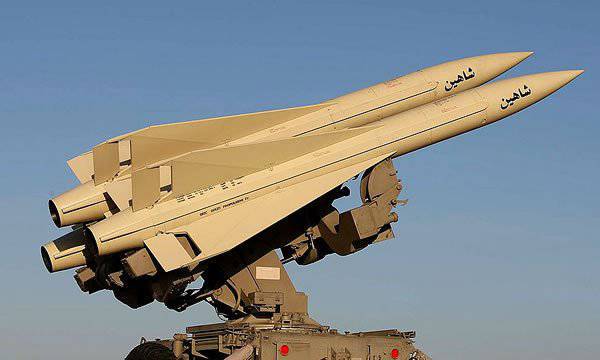
Thus, despite the rather high potential capabilities of enemy air reconnaissance forces and means, a number of problems of a technical and organizational nature are manifested in the air defense system of the Islamic Republic.
First of all, it is necessary to unite the Air Force, Navy, Ground Forces, border units, and civilian air forces in a comprehensive system of intelligence fleet, other departments. Moreover, the association should be implemented on the basis of a modern KSAU model, capable of automated collection, processing (identification) of large-scale radar data, ensuring its quick exchange between sources and consumers in the interests of timely bringing troops ready to repel aggression, as well as to provide accurate coordinates fire defense systems. This should be done as far as possible within the air defense zone and is mandatory for the air defense group, especially in missile-hazardous (threatened) directions. An example of such a KSAU can be a modernized version of the ACS "Polyana-D4M1" available in the air defense of the NE of Russia, which is a complex of automated control systems for military operations of a mixed air defense group. The hardware and software of this KSAU allow the collection, processing of radar information and notification of air and ground conditions; to manage the forces and means of mixed air defense groups; ensure the safety of flights of their aircraft; to develop recommendations for the management of subordinate units and units and to maintain interaction with them through automated target allocation and target designation. The complex is capable of processing and tracking at the same time up to 255 air targets.
Undoubtedly, there is an urgent need to update the radar fleet, equipping it with modern locators operating in different frequency ranges, having in their arsenal a set of special operating modes for use in conditions of intensive electronic countermeasures of the enemy. For the detection of modern EAS, made by technology "Stealth", need locators operating in the meter wave range. In this sense, the Sky-SVU type radar developed in Russia is capable of detecting and tracking airborne targets with EPR near 1 m 2 at altitudes 500 m to 65 km, at altitudes 20000 m - at ranges to 380 km. The deployment time of the radar position is about 20 minutes.
It is also important to carry out a set of the following measures to ensure the survival of elements of an SRVP: frequent change of position of the radar station, communications equipment; Deploying a system of false positions with imitation of the work of radio-electronic equipment; high-quality engineering equipment positions; widespread use of passive reflector-traps, simulators of thermal radiation; deployment near the RLP fire defense weapons; organization of protection against sabotage groups, etc.
The intelligence system must be supplemented with a network of visual observation posts, which is effective in detecting low-flying targets. A network of POS deployed at dominant heights, equipped with means of visual observation, communication and data transmission, will allow to solve a number of problems of the SSRA.
As is known, any radio-electronic means (RES) with the beginning of work on the air in a short period of time is detected by the enemy, its frequency characteristics are opened with subsequent fire or radio-electronic effects. Therefore, in recent years, passive (non-radiating) location complexes have been actively developed. An example of such a system is the Russian complex of electronic reconnaissance (CRTD), which has good performance indicators - long detection ranges of aerial targets and high accuracy of issuing target coordinates for anti-aircraft complexes (course of the target, removal, flight altitude). In addition, the CRTR is able to determine, with high probability, its belonging, type, class, etc., by the radiation parameters of an aircraft's electronic RES. According to information available in open sources, such a complex in single copies has already been acquired by Iran. With a sufficient number of KRTR samples, the reconnaissance system will be able to covertly provide the air defense system with accurate information about the air attack of the enemy on threatened directions from distances of about 400 km, which will make it possible to promptly alert the troops to repel air strikes and issue accurate targets to the air defense weapons.
FIRE TOOLS
The anti-aircraft missile (artillery) cover system is represented by air defense groups, which are based on anti-aircraft battalions. Depending on the type of armament, its configuration, the divisions distinguish between anti-aircraft, anti-aircraft, rocket-artillery, or anti-aircraft artillery divisions.
The formation of divisions is based on the principle of mixed acquisition of weapons systems, which provides a number of advantages over homogeneous ones. Mixed air defense groups, equipped with air defense missile systems with different principles of operation, a wide range of frequency characteristics, having different fire capabilities, mutually complement each other, compensating for their weaknesses, provide greater efficiency in repelling EAS attacks.
The group has a radar post, issuing target coordinates to firing equipment, as well as several mixed divisions. As a rule, one of the airfields is armed with long-range air defense systems (such as C-200, C-75), one - medium-range (such as Hawk, "Kvadrat"), zradn with a short-range anti-aircraft complex (like Rapier) and anti-aircraft artillery systems ZU-23-2, ZSU-23-4, C-60, Oerlikon.
Such recruitment ensures the complete autonomy of the combat operations of the air defense groups and allows the creation of a layered system of anti-aircraft missile and anti-aircraft artillery fire. At the same time, the presence of various anti-aircraft weapons in a group makes it possible to create a system of fire, echeloned in depth, height, to ensure the continuity of fire impact on aerial targets as they approach the concealed objects. In addition, with this formation of groups, the mutual protection of air defense systems is best realized, a non-lethal zone of destruction is created with a cover for the “dead” air defense system funnels.
An important characteristic of a fire system is the density of fire effects on an air target using anti-aircraft weapons. In physical terms, this value is close to the number of damaging fire effects. When calculating it, the parameters of the affected area (shelling) ZRK (ZAK), the values of probabilities of hitting various types of targets in certain conditions, temporary indicators of combat work, etc. are taken into account. Parameters of the zones of defeat (shelling) of the main types of ZRK (ZAK) that are contained in air defense groups are presented in Fig. 1.
Despite the high (as it seems at first glance) fire capabilities of the C-200 air defense missile systems (large values of the far border and the height of the affected area), one should not expect a decisive contribution to the effectiveness of the fight against airborne shock weapons. C-200 - outdated complex with low noise immunity and technical readiness. The ideology of its construction originates in the middle of the last century and does not meet today's requirements. The need for continuous operation of the RES complex with airing, the absence of special covert modes of operation makes it very vulnerable. A very limited number of air defense missiles of this type do not allow to create at least some kind of anti-aircraft rocket fire in threatened areas. Within its zone of destruction, C-200 will conduct air combat without organizing fire engagement, mutual cover, and concentration of fire.
The near border of the C-200 area of magnitude up to 17 km causes the need to organize its self-defense. Similar problems are characteristic of the complex.
C-75, besides, the parameters of its affected area are much inferior to the AMS
C-200. The low maneuverability of both air defense missile systems makes it difficult for them to change their starting positions in combat operations in time. At the 20-25 km range, the ZRAP system is complemented by Hawk and Kvadrat attack zones. These air defense systems are more mobile, maneuverable. With their number in threatened areas to protect important area objects, it is possible to create a system of fire with a multiplicity of overlap up to 2-3 at low and medium altitudes. This will make it possible to concentrate fire on important targets, provide mutual cover, interact when escorting targets, etc.
At low and extremely low altitudes from the 10-12 km ranges, the HQ-7 (FM-80) and the Tor-М1 systems are included in the ZRAP system. In the near zone, objects will be covered with anti-aircraft artillery and MANPADS. At the same time, at low and extremely low altitudes, the density of anti-aircraft fire can approach 4-6, which will allow to achieve the required effectiveness of repelling EAS impacts. In addition, the tasks of directly covering the groups of troops on the battlefield will be performed by numerous units of Strela-2 (3), Igla-1, and other MANPADS, which are located in the regular structures of the ground forces. Unfortunately, all systems in the ZRAP system (except the Tor-М1 air defense system) have an extremely low probability of hitting small-sized low-flying targets: cruise missiles, UAB, UR, UAV, etc. It is extremely difficult for these systems to deal with combat helicopters from - because of their short time in the affected areas (shelling).
An important condition for the effective functioning of the SRAP system is to ensure its survivability in the course of repelling EAS attacks. This is achieved by a periodic change of positions, as well as their immediate change after launching the anti-aircraft missiles (firing anti-aircraft shells), engineering equipment of launching (firing) positions, masking, false positions equipment, imitating the operation of radio-electronic devices at frequencies of the ZRK transmitters (ZRS), using passive corner reflectors and others
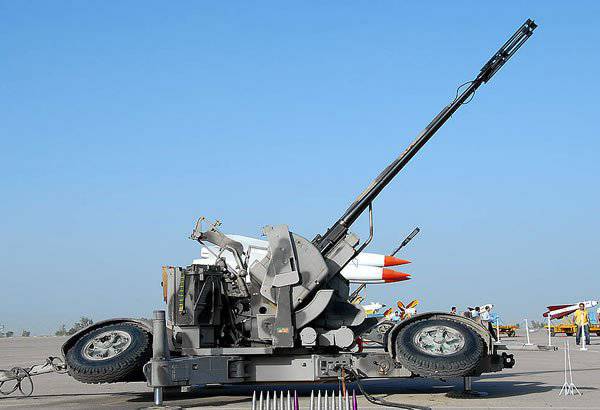
Thus, the existing quantitative and qualitative composition of air defense forces and weapons may create a fragmentary SCRA system at certain dangerous directions with its separation in depth, altitude, and directions, ensuring the required multiplicity of fire exposure for individual types of airborne explosives. However, the creation of a strong effective scoring system to cover the entire set of important objects, including troops on the battlefield, from strikes technically and informationally superior to the enemy's air is very problematic due to the specified reasons.
A particular weakness of the ZRAP system is its acquisition of obsolete SAMs and ZAK. Technique with a service life of three to four decades predetermines similar problems (as well as with ACS) in maintaining combat readiness at the required level. In the absence of supplies of spare parts, a practically depleted spare parts supply, a “barbarous” method of restoring weapons and military equipment is often used by disassembling combat-ready similar samples.
HOPE UPDATE
So, on closer examination of the capabilities of the Iranian air defense system, a host of problems are revealed revealing its current inability to give a proper rebuff to the air enemy. It is necessary to carry out a set of urgent measures for the technical equipment of all components of the air defense system, including the purchase of modern systems of automated control systems, radar, KSAU, electronic warfare, communications, development of its own production of models of weapons and military equipment using modern technologies. The purchase of three dozen Tor-M1 combat vehicles will not solve the problem of re-equipping the Iranian air defense system with new weapons.
To create a deeply echeloned SRAP system with multiple overlap of affected areas, it is necessary to have a combination of anti-aircraft weapons: long range - C-XNUMPPMU (C-300CB), medium-range - Buk-M300 (М1) type, short-range - Tor-like М2 (М1) ”,“ Armor-S ”.
An important direction of strengthening the air defense system could be equipping the Iranian armed forces with EW systems made in Russia. The complex of electronic warfare systems is capable of significantly reducing the capabilities of strike aircraft for searching, detecting and hitting ground targets during the “contactless” impact on the airborne inflow zone; disrupt the onboard equipment of cruise missiles in the GPS satellite navigation system; to distort the readings of the radio-altimeters of strike aviation, cruise missiles and UAVs (which makes it very difficult to fly over the mountainous terrain); lead to failure during the flight of the entire complex of electronic equipment of the aircraft.
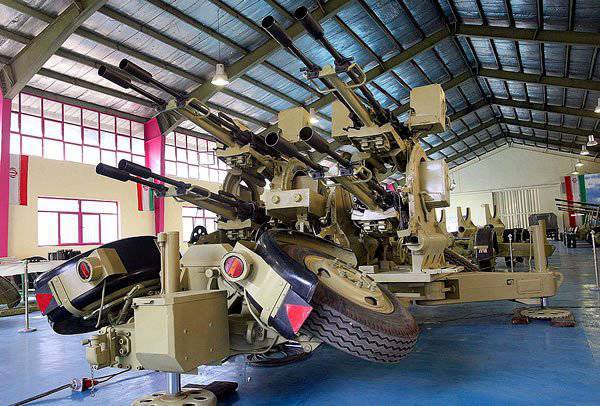
With the available EW facilities, it is possible not only to “blind” the aircraft radar, but to distort the radio-electronic environment, generate false targets, distort the coordinates of true targets, enter coordinate errors, etc.
There is also a lot of developments for the modernization of anti-aircraft artillery, which is very effective in combating low-flying air targets (combat helicopters, attack aircraft, low-speed cruise missiles). The improvement of the antiaircraft defense system is carried out along the lines of increasing the effectiveness of firing, automating the processes of preparing and firing, developing guided ammunition, sensors for undermining a projectile in the target area, and controlling the rate of fire. Work in this direction in Iran is underway.
PS All data on the combat composition of military groups, the quantitative characteristics of the combat capabilities are borrowed from the materials of the open press.
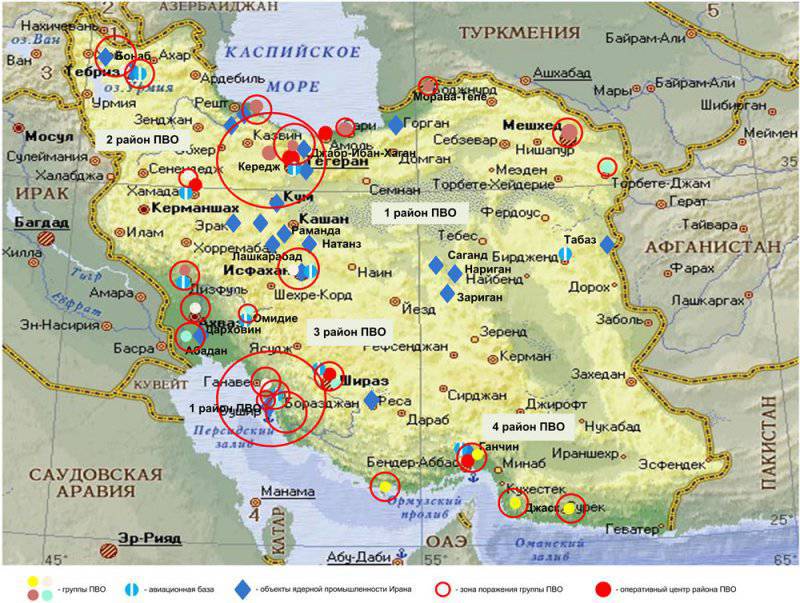
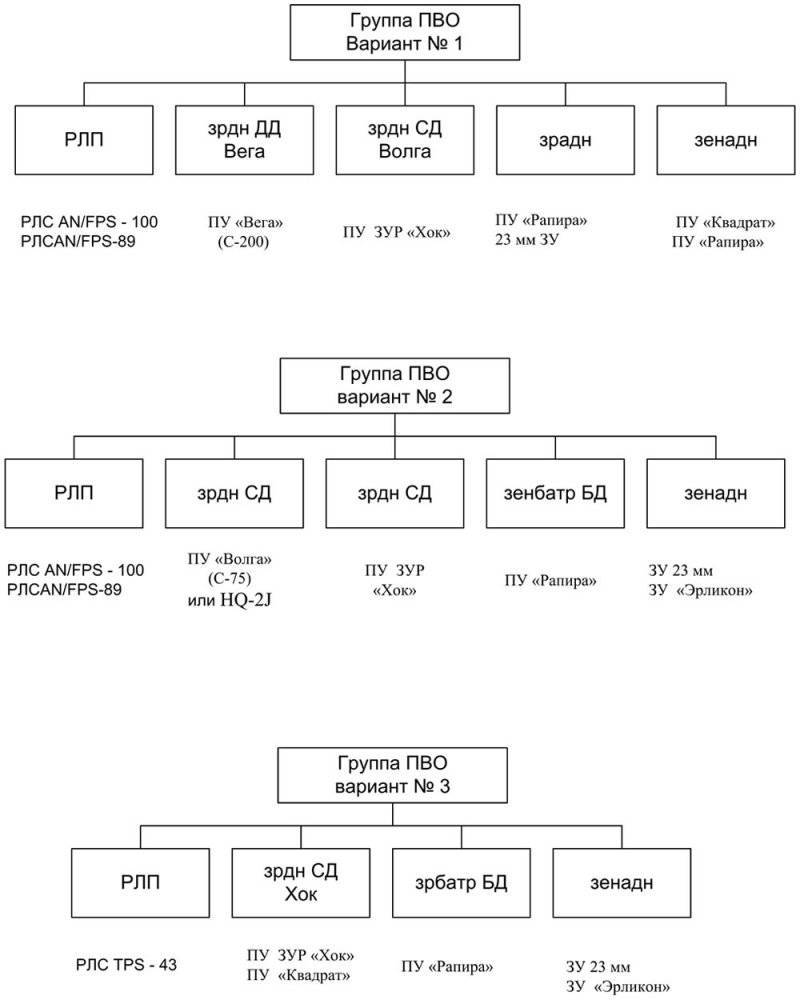
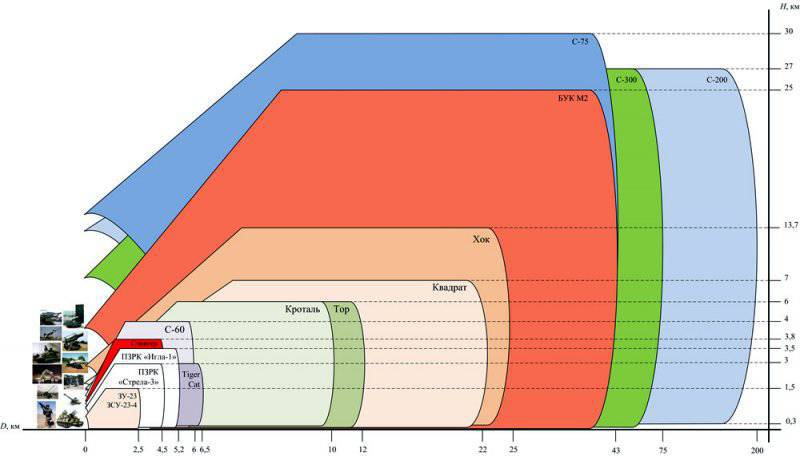
Information